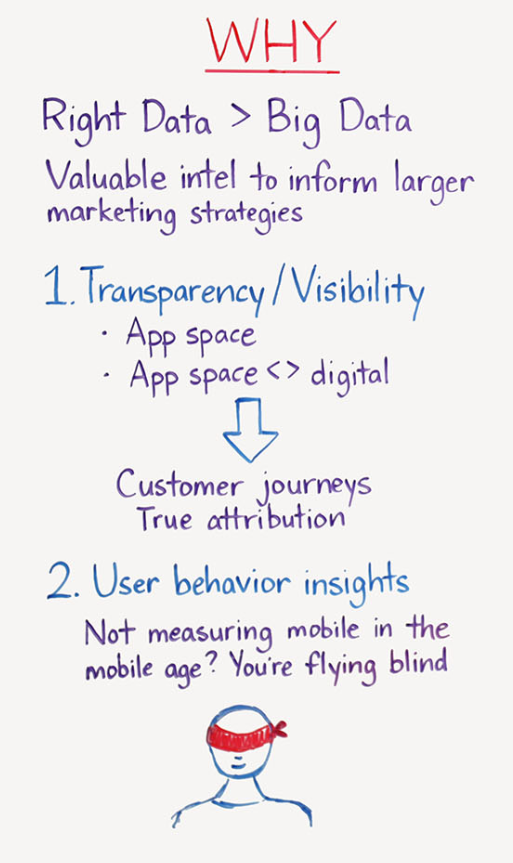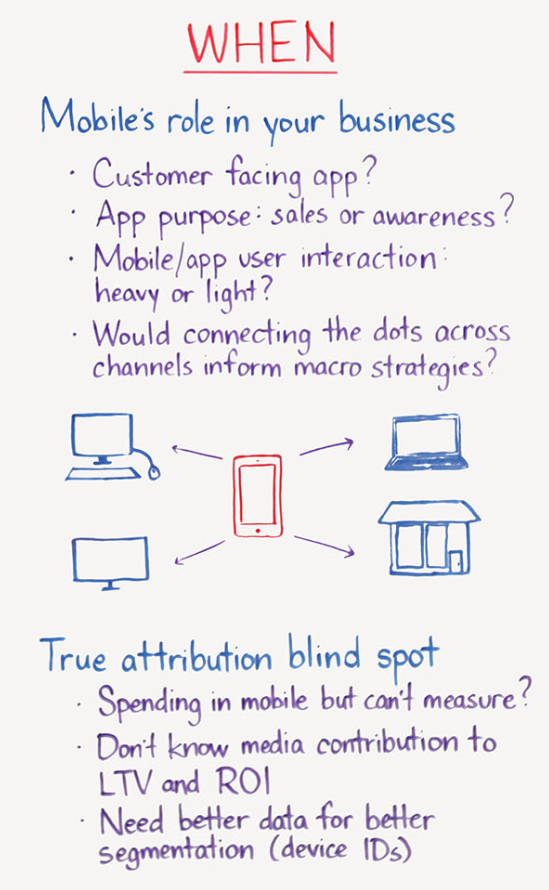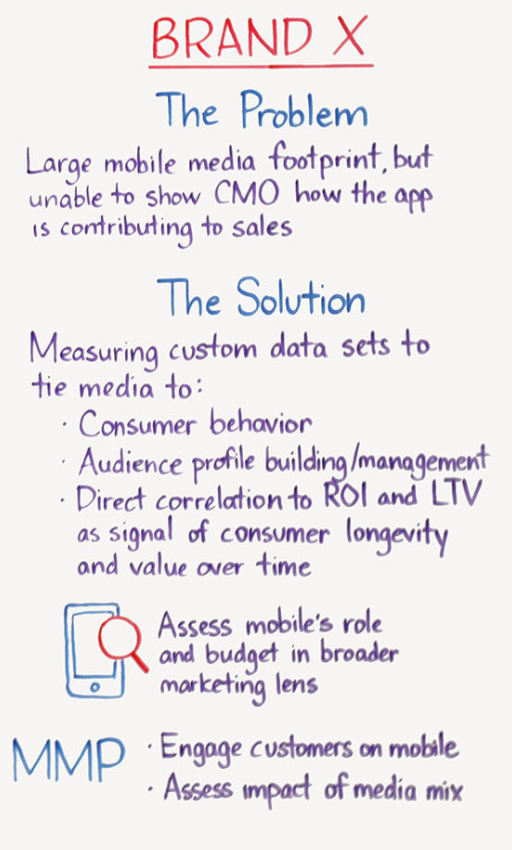
Why brands need a mobile measurement partner (MMP)
Welcome to the twenty third edition of MAMA Boards, an AppsFlyer video project featuring leading mobile marketing experts on camera.
For today’s mini whiteboard master class, we have Vladimir Golinder, Head of Media Technology at 360i, an award-winning agency with deep expertise in media technology, martech, and analytics.
With the scale of data available in an increasingly more complex and technology-driven world, the name of the game is not quantity, but quality and accuracy. Fortunately, marketers are starting to understand this. To keep you going in the right direction, Vladimir shows us why a mobile measurement partner, or MMP, is important for achieving data accuracy and efficiency, then asks a series of thought-provoking questions to help you position this powerful tool in your strategic tech stack.
Real experts, real growth. That’s our motto.
Enjoy!
Transcription
Welcome. This is another edition of MAMA Boards by AppsFlyer. My name is Vladimir Golinder, I’m the Head of Media Technology at 360i, which is a fully integrated agency specializing in media technology, martech, and analytics.
Today, we’re going to talk about Why Brands Need a Mobile Measurement Partner.
So before we get into why brands need a mobile measurement partner (we’ll call it an MMP for short), I really want to elaborate on the word “brand.”
In today’s conversation, it’s really about any organization that could be mobile-first, mobile-centric, has an app, or maybe even thinking about having an app in the future. With this in mind, we’re going to talk about how that concept is going to trickle down into why MMPs are important.
Why are MMPs important to your marketing efforts?
In today’s day and age, it’s really not about such proliferation of information. It’s really not about Big Data anymore. It’s about right data. Therefore, everything we’re going to be talking about today specifically is going to be centered around this concept of right data.
When you think about technology, any technology in the space, the intended purpose behind any of it is to solve a business problem.
We do that through specific insights that the technology provides, and the underpinning of all of that is good measurement.
When you talk about the MMP space and why brands might need a mobile measurement provider, it’s really about how we have to create an enablement layer. It’s about how the MMP gives us information at our fingertips, at the core, and is able to influence and solve business challenges. Arguably, that’s what we as marketers are after as the Holy Grail with technology.
When you talk about the concept of right data by layering on an MMP, it really gives you more transparency and more visibility into what people are doing – what your consumers are doing in the app space, whether that’s specifically the events that they interact with, the user flows that they interact with, or determining whether a user will represent a more a lower-funnel conversion or sales-type actions.
It’s all about how we can tie that into the larger ecosystem with other digital channels as well.
Getting into more of the transparency and the visibility, it’s also about crafting more optimized consumer journeys and looking at this through the lens of true attribution. With that perspective in mind, one of the other takeaways as to why MMPs are important is specifically around gleaning insights about what consumers are doing within the app.
We talked about that a little bit, but also more about how, in the time of a mobile-centric world, organizations or brands are spending money in mobile apps and are unable to answer specific questions about performance.
These might include how those initiatives or campaigns ladder up to larger initiatives, or how they’re performing, or how they’re part of a larger media mix – and if there aren’t many answers, then it’s not a focused approach.
The idea is that we as marketers can’t fly blind when we’re stewarding clients’ dollars, and that we must therefore leverage MMPs as the enablement layer to provide a level of insight. So as we get into when brands or organizations might need an MMP, the biggest macro question they can ask themselves is, “What is mobile’s role in my business?”

When do I need or want to work with an MMP?
The next set of questions is really going to be designed to get you started on your journey to see if you actually need an MMP as part of your tech stack.
Some of these next questions include:
- “Do you have a consumer-facing app? If not, do you have plans to put one in market?”
- “What are you asking consumers to do? Is the required action going to be more awareness-driven? Are there going to be lower-funnel conversions or sales-type tactics?”
- Specifically for mobile and app usage, “If you currently have an app, how much are you asking your consumers to interact with it?”
All of these factors and decisions play a really big role. Another part of the equation is about when an organization might need an MMP or that enablement layer that we talked about. One of the biggest takeaways from here is really about cross-device and omnichannel approaches from an attribution standpoint. That is, being able to tie in an environment that was once closed off to the larger ecosystem is really important for any organization so that they can decide what role mobile should play within their business.
As we think about when brands might need an MMP, and also look into mobile’s role in your business specifically, we have to think about potential blind spots, as well as how those blind spots relate to attribution and measurement.
Going off on a limb and making a slight assumption, if your organization doesn’t have an MMP layer, you might not be able to answer the following sample questions:
- If you’re spending in mobile and mobile apps specifically, can you measure?
- Do you have advanced analytics functions that can help you assess how media is contributing to LTV and ROI?
- As an industry, we’re moving away and relying less and less on the cookie space. With that in mind, do you have a technology layer in place to help you aggregate device IDs for audience management and re-messaging?

Example
So this brings us to a really quick story that I wanted to share around a big-box retailer – we’ll call them Brand X for now.
The retailer came to us and said, “Look, we have a very large media footprint. We spent a lot of money in the space. We have a consumer-facing app. We sell a lot of products within the app, but we still can’t answer several questions the CMO was asking.
Some of those questions include:
- What role should mobile play as part of the larger media mix?
- How media is influencing app usage?
- How are our apps are contributing to sales?”
If your organization has similar questions to Brand X, then an MMP might be part of the solution for your organization. However, in order to make that work, we first need to create and enable the layer, which will be comprised of technology and measurements.
More importantly, it is going to introduce a new element of intelligence within your organization will provide insights tying media sources to consumer behaviors, either within the app or through cross-device initiatives. It’s also going to assist with audience building, leveraging device IDs for audience management, and retargeting users through different parts of your tech stack (since the opportunity is there). We also can be thinking about advanced analytics functions where we can assess LTV and ROI and introduce a new concept of consumer longevity and value over time to your organization.
So, we talked about a number of things today. We talked about why MMPs are important. We talked about when brands might need an MMP. Between all those things, when you boil it down, it comes down to two things.
First and foremost is technology. I get a lot of questions from clients these days around, “Hey, does the tech even exist?” And it absolutely does. It’s evolving over time and it’s getting better and better and stronger from a measurement perspective.
The second piece which we’re diving into is more of the measurement piece. It’s how technology needs to enable better measurement so that we as marketers can glean insights and help our clients solve larger business initiatives. With that in mind, I really hope that this information sends you well on your journey into the MMP space.

That’s it for today. If you have any questions or comments, please leave them below.
Thank you. Bye, bye.



